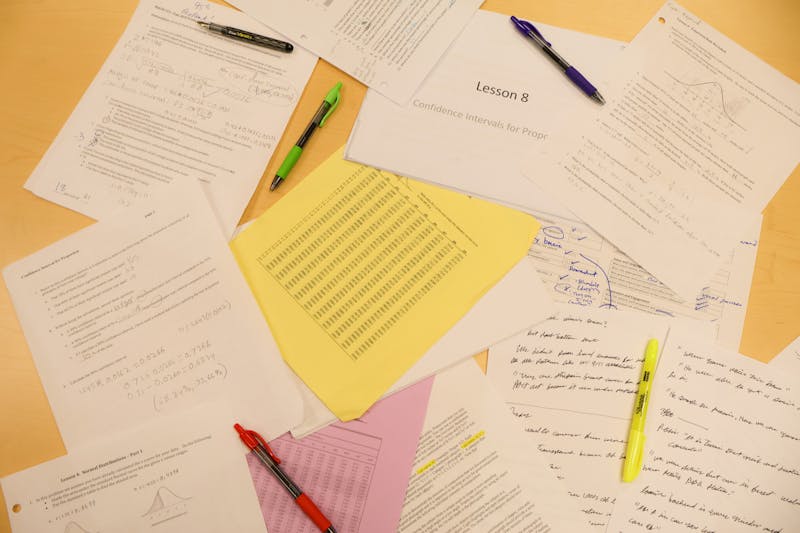Higher education has a branding problem that is affecting its bottom line. After decades of compulsory enrollment, universities are finding that they are losing customers to trade schools and the workforce. This is causing cracks to form that, if left untended, have the potential to shutter colleges and universities across the country.
Symptoms of the disease are already starting to show up in ways that students can see. Following an interview with Pennsylvania Gov. Josh Shapiro, The Slate reported that Pennsylvania’s state-run higher education system, PASSHE, has seen a 30% decrease in enrollment.
This has resulted in some belt-tightening for schools like Shippensburg, whose student government uncoincidentally slashed the budgets for student groups last spring to avoid adding a whopping fee of 100 cents per credit to students’ bills. The lesson here being that declining college enrollment means less money is available for current students.
Shippensburg University is not alone, and it could be worse. After failing to get a $30 million emergency loan, Birmingham-Southern College in Alabama announced that it will be closing its doors at the conclusion of the spring semester. It will be joining Ohio’s Notre Dame College and Missouri’s Fontbonne University, who were also forced to throw in the towel.
The trend does not only affect state colleges. Harvard University received about 3,000 fewer applications for its upcoming class, continuing a trend started in 2021, The Wall Street Journal reports. The paper adds that Brown University saw 2,000 fewer applications this year compared to last as well. Harvard has a cushy endowment that will save it from being shuttered anytime soon, which is a shame because high-profile colleges bear a large share of the blame for disenchanting students and their parents on the idea of continued education.
The Journal reported on a Gallup poll in January that said the percentage of Americans who expressed “a lot of confidence” in higher education fell from 57% to 36% the following year. The report correctly points to the scandals that have plagued academia in the lead up to its story about the poll.
Before 2023 sailed off into the history books, two Ivy League presidents were given their walking papers. They were Elizabeth Magill of the University of Pennsylvania and Harvard’s Claudine Gay. Both were thrust, disastrously, into the public’s eye after failing to quell a series of antisemitic protests that were pointedly targeting Jewish students on their campus. Congress is also investigating Rutgers University and the University of California, Berkeley for their response to similar antisemitic incidents. Gay had also faced plagiarism accusations.
These controversies add to several years of ideological protests that have seen speakers, comedians and other entertainers chased off campus. Is there any mystery as to why half of the country no longer trusts these institutions?
While the Gallup poll notes that confidence in the universities is down across all groups, it is especially decreased among Republicans. Gallup says that it first added higher education to their yearly institutional confidence poll in 2015. Since then, Republican confidence in the university system has decreased 37 points to current standing of 19%. Independents and Democrats’ confidence decreased 16 and 9 points, respectively.
In 2017, Gallup looked for a reason behind the loss of faith and found different reasons based on the respondents’ political views. A supermajority of Republicans answered that they felt universities were “too liberal and political,” “don’t allow students to think for themselves,” and that students were having “an agenda” pushed on them. Democrats cite that college is too expensive, “not well-run” and that graduates are unable to find jobs.
Neither side has anything to cheer about since these views were first recorded by Gallup. To address the Democrats, since 2017 colleges have faced a global pandemic, record monetary inflation and the disrupting technological development of artificial intelligence. As the Journal noted, “of 100 random freshmen enrolling in college today, 40 will not graduate. Of the remaining 60 that earn a degree in six years, 20 will end up chronically unemployed.”
There is opportunity here, though, as Gallup notes, that university supporters agree on their reasons for doing so, despite ideological differences. Those reasons were: a positive personal experience in college, “the belief that colleges are essential for the nation” and “that colleges are doing a good job of educating students.” The fourth reason for support — that a degree is necessary for career success — will continue to wane.
Addressing costs, one of the reasons that Democrats have lost confidence in college, will probably be ineffectual at this point, as the Journal notes that half of parents they still would not want their children to go to college, even if cost was not a factor.
This means that universities should not count on the government to increase demand for their product. No. To succeed, universities will need to spur a supply-side revolution by increasing the attractiveness of their institutions. To do this, they will need to be fiscally responsible. A good start would be to trim administrative excess, a budget killer for many institutions, particularly in the Ivy League. For state universities, more money from higher enrollment numbers would be a boon. This would allow them to infuse cash back into facilities and clubs, which provide valuable experience to students and allow them to do something more positive than hazing each other.
The first college to cut an ad announcing a return to a classical liberal education, with a campus dedicated to free speech and ideological diversity, will reap the reward. At this point, the only other option left is to try more of the same, which is to fail. Who will be the first to return to fundamentals? Time will tell.


The Slate welcomes thoughtful discussion on all of our stories, but please keep comments civil and on-topic. Read our full guidelines here.